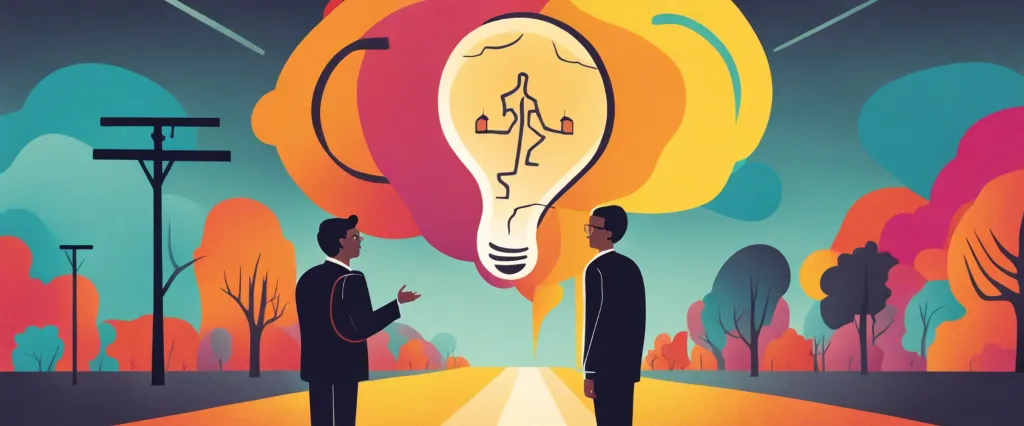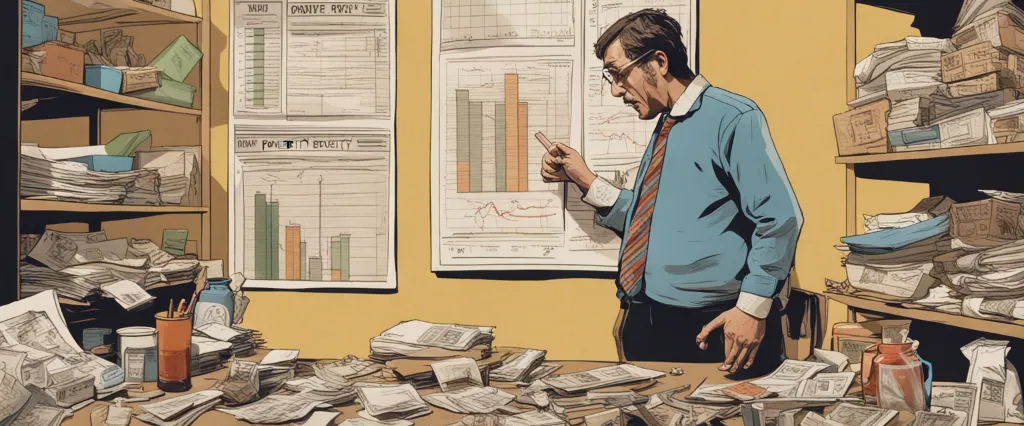In their groundbreaking book “Poor Economics,” Abhijit V. Banerjee and Esther Duflo provide a fresh perspective on global poverty, challenging conventional wisdom and presenting innovative solutions. In this summary, we will explore the key insights and policy recommendations put forth by Abhijit V. Banerjee, an influential economist and one of the authors of this transformative work.
Abhijit V. Banerjee, an Indian-born economist, is the Ford Foundation International Professor of Economics at the Massachusetts Institute of Technology (MIT). Born in 1961 in Mumbai, Banerjee completed his undergraduate studies at the University of Calcutta before pursuing a Ph.D. in Economics at Harvard University. He co-founded the Abdul Latif Jameel Poverty Action Lab (J-PAL) alongside his co-author Esther Duflo, a research network aimed at alleviating poverty through rigorous research and evidence-based policy interventions. Banerjee’s focus on experimental approaches and his commitment to understanding the nuanced realities of poverty have made him a leading expert in the field. In “Poor Economics,” Banerjee’s insightful analysis and pragmatic solutions inspire us to challenge our preconceived notions and reimagine a world where poverty is eradicated.
Chapter 1: Understanding Poverty: Unraveling the Complexities
Chapter 1 of “Poor Economics” by Abhijit V. Banerjee, titled “Understanding Poverty: Unraveling the Complexities,” delves into the challenges of comprehending and addressing poverty. The chapter highlights the complexity of poverty and the need for a nuanced understanding of the myriad factors that contribute to it.
Banerjee emphasizes the importance of evidence-based analysis when comprehending poverty, instead of relying solely on preconceived notions or grand theories. He argues that poverty is a multi-dimensional issue influenced by a wide range of factors, such as lack of education, poor health, limited access to credit, and behavioral patterns deeply ingrained in impoverished communities.
The chapter features several groundbreaking studies conducted by the authors, who focus on the actual experiences and decisions made by individuals living in poverty. Banerjee and his co-author, Esther Duflo, employ randomized controlled trials (RCTs) to assess the impact of various anti-poverty programs across different contexts worldwide. By utilizing RCTs, they argue that it is possible to unravel the complexities of poverty and inform policymakers about effective interventions.
Additionally, the chapter highlights the “poverty trap,” which suggests that individuals facing extreme poverty find it challenging to invest in activities that could lead to their economic advancement. Banerjee proposes that to break this cycle, it is essential to have a nuanced understanding of the decision-making processes of the poor and design interventions that align with their incentives and constraints.
In summary, Chapter 1 of “Poor Economics” stresses the need for a comprehensive and evidence-based approach to tackling poverty. By focusing on the nuances of poverty, understanding individual decision-making, and conducting rigorous experiments, the authors aim to reveal effective and sustainable solutions for poverty alleviation.
Chapter 2: The Behavioral Economics of Poor: Exploring Decision-Making
Chapter 2 of the book “Poor Economics” by Abhijit V. Banerjee is titled “The Behavioral Economics of the Poor: Exploring Decision-Making.” This chapter delves into the various decision-making factors that affect individuals living in poverty, particularly in the context of financial and health-related choices.
The chapter begins with an exploration of the concept of limited attention and its impact on decision-making. People living in poverty often face a multitude of pressing concerns and lack the luxury of focusing solely on long-term planning. As a result, their decisions are often influenced by immediate needs and concerns, leading to suboptimal outcomes in the long run.
The authors highlight the significance of framing and presentation in influencing decision-making among the poor. For instance, individuals might be more likely to save if they are encouraged to think about the future by activating their future selves through visualization techniques. Similarly, using social norms and peer pressure can be powerful motivators for behavior change.
The chapter also explores the role of adoption and usage of new technologies by the poor. While new technologies and interventions hold tremendous potential for improving social and economic outcomes, the authors emphasize the importance of aligning their design with the cognitive abilities and constraints of the poor. For example, offering smaller denominations of savings accounts or using simple reminders can significantly improve savings.
Overall, the chapter emphasizes that understanding and addressing the behavioral aspects of decision-making among the poor is crucial for designing effective interventions and policies. By considering the biases, constraints, and cognitive limitations of individuals living in poverty, we can develop more tailored and effective solutions to alleviate poverty and improve well-being.
Chapter 3: Health and Education: Breaking the Cycle of Poverty
Chapter 3 of the book “Poor Economics” by Abhijit V. Banerjee explores the complex relationship between health, education, and poverty, focusing on how breaking this cycle is crucial for individuals and societies as a whole.
The chapter begins by emphasizing that poverty often leads to poor health and limited access to education, and in turn, these factors contribute to ongoing poverty. The author discusses how poor health often prevents individuals from working, leading to a reduced income and continued poverty. Additionally, when children are in poor health, they miss out on school days, hindering their educational opportunities. Without proper education, individuals struggle to break free from the cycle of poverty.
Banerjee highlights various interventions and strategies that have been implemented to break this cycle. One example is the provision of basic healthcare services and the promotion of preventive measures, such as vaccines and mosquito nets, which have successfully improved health outcomes in impoverished communities. Another example is the implementation of interventions targeting education, such as school feeding programs or conditional cash transfers that incentivize parents to send their children to school. These efforts aim to improve educational outcomes for children, thus potentially breaking the cycle of poverty in the long run.
However, the chapter also acknowledges the challenges and limitations of such interventions. Poverty is a complex issue with multiple factors influencing its persistence, and solving it requires addressing various interlocking problems. Additionally, the impact of interventions can vary in different contexts, making it crucial to carefully design programs that suit local conditions.
In conclusion, Chapter 3 emphasizes the importance of addressing health and education as key elements in breaking the cycle of poverty. By improving health outcomes and ensuring access to quality education, individuals can be better equipped to escape poverty and build a more prosperous future.
Chapter 4: Credit and Insurance: Financial Tools for the Poor

Chapter 4 of “Poor Economics” by Abhijit V. Banerjee focuses on the role of credit and insurance as financial tools for the poor. The chapter emphasizes the importance of understanding the specific needs and circumstances of the poor when designing effective financial products.
Banerjee starts by exploring the concept of microcredit, which emphasizes providing small loans to individuals with limited collateral or credit histories. While microcredit programs aim to empower the poor and reduce poverty, their impact is often overstated. The author argues that while access to credit can be valuable, it is not a magic bullet and must be accompanied by appropriate education and support to be truly effective.
The chapter then delves into the concept of insurance. The poor often lack access to formal insurance mechanisms and are vulnerable to shocks that can push them further into poverty. Banerjee examines the concept of index-based weather insurance, which provides coverage against specific weather events that may damage crops. This type of insurance is designed to address the unique needs of the poor, who rely heavily on agricultural activities for their livelihoods.
However, the author also highlights the challenges in implementing effective insurance programs. For example, many poor individuals lack the financial literacy required to understand insurance products fully. In addition, adverse selection and moral hazard issues can undermine the effectiveness of insurance mechanisms.
Banerjee concludes by reiterating the importance of understanding the specific needs and contexts of the poor when designing financial tools such as credit and insurance. He suggests that careful experimentation and rigorous evaluation are necessary to determine which interventions are most effective in reducing poverty and improving the lives of the poor.
Chapter 5: Agriculture and Food: Navigating Challenges of Hunger and Subsistence
In Chapter 5 of “Poor Economics” by Abhijit V. Banerjee, the focus is on the challenges of hunger and subsistence in agriculture and food systems. Banerjee explores the reasons behind persistent hunger and the difficulties faced by small-scale farmers in developing countries.
The chapter begins by emphasizing that simply increasing agricultural productivity is not enough to solve the problem of hunger. The author argues that the poor often lack purchasing power to access the food they need, even if it is available. This leads to a focus on the deeper issues of poverty and inequality that perpetuate hunger.
Banerjee examines various interventions aimed at improving agricultural productivity and food security. One example is the distribution of subsidized fertilizers, which many policymakers believe will increase crop yields and reduce hunger. However, the author highlights that the impact of such programs is often limited due to factors like corruption and the inability of small farmers to afford the required inputs. Banerjee also discusses the potential benefits of direct cash transfers or vouchers, which could enable households to purchase the food they need without relying on specific agricultural programs.
Moreover, the chapter explores the gender dynamics in agricultural households, as women often face greater challenges in accessing resources and opportunities. Banerjee emphasizes the importance of understanding these dynamics and promoting gender equality in agriculture programs.
Overall, Chapter 5 of “Poor Economics” sheds light on the complexities surrounding hunger and subsistence in agriculture and food systems. It calls for a nuanced approach that goes beyond just increasing productivity, recognizing the need for addressing long-standing issues of poverty, inequality, gender, and access to resources.
Chapter 6: Political Economy: Examining the Role of Institutions
Chapter 6 of Poor Economics by Abhijit V. Banerjee delves into the role of institutions in shaping the political economy and subsequently influencing the effectiveness of policies aimed at poverty alleviation. The authors argue that institutions, such as the government, bureaucracy, and civil society, play a crucial role in governing policy implementation and determining its impact on the poor.
Banerjee and Duflo highlight that the quality of institutions can significantly impact how well policies are executed and their ability to address poverty effectively. They discuss the case of the public distribution system (PDS) in India, which is designed to provide subsidized food to the poor. The authors find that the system’s efficacy varies widely across different states due to differences in institutional capacity. For instance, states like Tamil Nadu have managed to implement the PDS effectively, ensuring food reaches the intended beneficiaries, while in others, such as Bihar, corruption and leakage of supplies are prevalent, depriving the poor of their entitled support.
The authors also emphasize the importance of civil society organizations in holding institutions accountable and ensuring the effective implementation of policy measures. They showcase the role of NGOs, community organizations, and social audits in improving the delivery of public services. Through various case studies, Banerjee and Duflo highlight the positive impact of community engagement, collective action, and an informed citizenry on enhancing the accountability and responsiveness of institutions.
In conclusion, Chapter 6 underscores the significance of institutions in determining the success of poverty alleviation policies. By examining the political economy and institutional factors, the authors emphasize that efforts to reduce poverty should encompass institutional reform, citizen engagement, and effective governance to ensure that policies actually reach those who need them the most.
Chapter 7: Aid and Development: Evaluating Interventions
In Chapter 7 of Poor Economics by Abhijit V. Banerjee and Esther Duflo, titled “Aid and Development: Evaluating Interventions,” the authors discuss the effectiveness of aid and development programs in improving the lives of the poor.
The chapter highlights the difficulty in measuring the impact of aid interventions, as it is often challenging to isolate the effect of a specific program from other factors that may be influencing outcomes. The authors emphasize the importance of conducting randomized controlled trials (RCTs) to evaluate these interventions rigorously. RCTs involve randomly assigning participants to either receive or not receive the aid program, allowing researchers to attribute any changes in outcomes to the program itself.
The authors provide various examples of RCTs conducted to evaluate aid programs. They explore the impacts of different interventions, including microfinance, conditional cash transfers, and deworming programs. Through these studies, they find mixed results. While microfinance showed no significant impact on poverty reduction, conditional cash transfers demonstrated improvements in health, education, and overall well-being. Deworming programs were found to be highly cost-effective in improving educational outcomes.
Furthermore, the authors discuss the limitations and challenges of aid programs. They argue that while aid can make a difference in specific contexts, it is not a panacea for eradicating poverty. They emphasize the need for adaptability and flexibility in aid programs, as the impact can vary depending on local conditions.
In summary, Chapter 7 explores the evaluation of aid and development programs using rigorous methodologies like RCTs. The authors highlight that the effectiveness of these interventions differs based on specific contexts, providing evidence to support the design and implementation of more impactful aid programs to alleviate poverty.

Chapter 8: Rethinking Poverty Alleviation: Innovative Approaches for Change
Chapter 8 of “Poor Economics” by Abhijit V. Banerjee explores innovative approaches to poverty alleviation, challenging traditional beliefs and strategies. The chapter argues that to effectively combat poverty, it is necessary to understand the lives and decisions of the poor.
Banerjee begins by discussing the importance of experimentation in poverty alleviation efforts. He emphasizes the need for policymakers to be open to testing different approaches and learning from their successes and failures. By conducting randomized controlled trials (RCTs), researchers can gain valuable insights into what works and what doesn’t in poverty alleviation.
The chapter also highlights the impact of institutions and politics on poverty alleviation efforts. Banerjee argues that institutions play a crucial role in shaping the behavior and choices of the poor. He cites examples of how institutions such as financial cooperatives and self-help groups have been successful in providing financial services and support to the poor.
Additionally, Banerjee explores the role of politics in poverty alleviation. He acknowledges that politics is often messy and complicated, but it is vital to engage with political processes to bring about effective change. Banerjee emphasizes the need for policymakers to understand the political constraints and incentives that shape policy decisions.
Furthermore, the chapter delves into the concept of social change and how it can be harnessed to alleviate poverty. It examines the interplay between social norms, culture, and poverty, arguing that social change can be a powerful tool for ending poverty. Banerjee discusses campaigns that have successfully changed social norms, such as those promoting the importance of education, sanitation, and healthcare.
In conclusion, Chapter 8 of “Poor Economics” presents a comprehensive examination of the need for innovative approaches in poverty alleviation. It emphasizes the importance of experimentation, understanding institutions and politics, and harnessing social change to bring about effective solutions to poverty.
After Reading
In conclusion, Poor Economics by Abhijit V. Banerjee offers a unique and insightful perspective on the nature of poverty and development. Through rigorous research and fieldwork, Banerjee’s book challenges conventional wisdom and sheds light on the complexities of poverty and the effectiveness of various anti-poverty interventions. By examining real-life examples and providing data-driven analysis, the book encourages readers to reevaluate their understanding of poverty and consider innovative approaches to alleviating it. Overall, Poor Economics is an informative and thought-provoking read that offers valuable insights for policymakers, economists, and anyone interested in understanding the challenges and possibilities of addressing poverty.
1. The Theory of the Leisure Class by Thorstein Veblen: This classic work explores the concept of conspicuous consumption and critiques the wasteful behavior of the upper class in society. Veblen’s insights into the intersection of economics and social status make this a thought-provoking read for anyone interested in understanding the inequalities inherent within modern society.
2. Excellent Sheep by William Deresiewicz: Drawing on his experience as a former Yale professor, Deresiewicz delves into the flaws of the current education system, arguing that it stifles creativity and produces a generation of conformist “excellent sheep.” This book challenges conventional notions of success and offers alternative perspectives on the purpose of education.
3. Nickel and Dimed by Barbara Ehrenreich: After reading Poor Economics, Ehrenreich’s work provides a complementary perspective on poverty and the struggles faced by low-wage workers in America. Through her immersive investigative journalism, she exposes the harsh realities of working-class life, shedding light on the challenges that perpetuate the cycle of poverty.
4. Capital in the Twenty-First Century by Thomas Piketty: Piketty’s groundbreaking book examines wealth and income inequality on a global scale. Through extensive data analysis, he explores the historical patterns and dynamics that contribute to increasing disparities in society. This comprehensive study offers critical insights into the economics of inequality and its implications for the future.
5. Evicted: Poverty and Profit in the American City by Matthew Desmond: Building on the themes of Poor Economics and Nickel and Dimed, Desmond’s book takes readers into the heart of America’s housing crisis. Through captivating storytelling and rigorous research, he exposes the deep-rooted issues faced by low-income families trapped in an exploitative rental market. Evicted offers a powerful examination of the intersection between poverty, housing, and economic opportunity.
These five books, including The Theory of the Leisure Class, Excellent Sheep, Nickel and Dimed, Capital in the Twenty-First Century, and Evicted, collectively provide a comprehensive understanding of the structural issues, inequalities, and challenges faced by different social classes within society.



